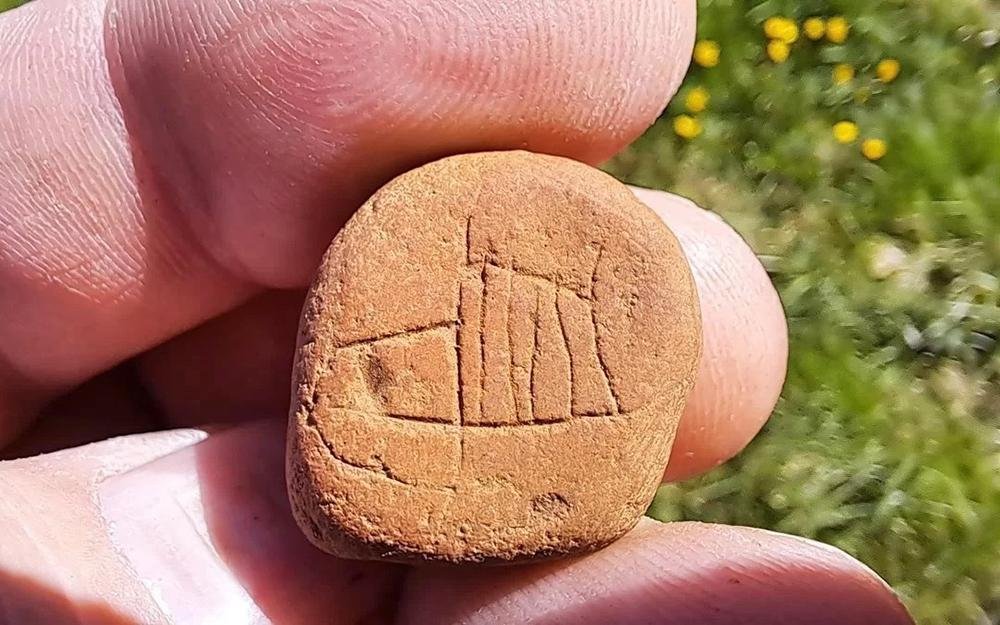Archaeologists in Iceland have made a significant discovery at the Stöð archaeological site, located near the village of Stöðvarfjörður on Iceland’s eastern coast.
 Credit: Landnámsskáli í Stöð
Credit: Landnámsskáli í Stöð
The excavation has uncovered a sandstone carving featuring a Viking ship, potentially making it the oldest image ever discovered in Iceland.
Since 2015, archaeologists have been conducting excavations at the site, returning each summer to continue their work.
Stöð is believed to have served as a seasonal camp for various activities such as fishing, hunting, whaling, and fish oil production. The settlement was initially inhabited by Þórhaddur ‘The Old’ from Trondheim, Norway, who lived there until his death.
However, recent discoveries have unveiled an even older longhouse beneath the settlement-era structure, estimated to date back to around AD 800, approximately 75 years prior to the permanent settlement of Iceland.
This longhouse, measuring an impressive 31.4 meters (103 feet) in length, is among the largest ever found in Iceland. Notably, only chieftains’ farms in Scandinavia had longhouses larger than 28 meters (92 feet).
It is also the richest longhouse ever excavated in Iceland, yielding a wealth of artifacts, including 92 beads and 29 silver objects, including Roman and Middle Eastern coins, according to archaeologist Bjarni F. Einarsson, who is leading the excavation.
The absence of domesticated animal remains within the older longhouse suggests that it might have served as a temporary refuge for fishermen, hunters, and Viking sailors to store their valuables.
Einarsson speculates that this older longhouse could have been a seasonal hunting camp operated by a Norwegian chief.
It is likely that this chief organized expeditions to Iceland with the aim of gathering valuable resources and transporting them back to Norway. The presence of walrus ivory in Iceland confirmed through DNA analyses and radiocarbon dating, supports the theory of such expeditions, as a now-extinct North Atlantic subspecies of walrus inhabited the island in the past.
It is within the walls of this older longhouse that the sandstone carving depicting a Viking ship was discovered.
Although ship carvings made from bone, wood, and stone are common in Nordic countries, this finding is exceptional as it represents the first recorded depiction of a ship in Iceland and is likely the oldest image ever discovered in the country.
The sandstone carving, approximately 1 cm wide, portrays a ship with its sails unfurled. This discovery holds great significance in terms of understanding Viking culture and maritime activities in the region, providing insights into early seafaring practices and the connections between Iceland and other parts of the Viking world.
Further exploration of the Stöð site using survey equipment has revealed additional evidence of structures and potential boat burial sites. These findings suggest the presence of a more extensive settlement or ceremonial area, offering exciting opportunities for future research on the history and cultural practices of the early inhabitants in East Iceland.





